When you sip your morning coffee, how often do you think about the journey it took to reach your cup? From the lush hillsides of small farms to the supermarket shelves, the story of that coffee is more complex than most of us realize. The conventional farming practices that produce many of our daily staples often come with a hidden cost: environmental degradation and exploitation of vulnerable communities. In a world where our choices as consumers hold more power than ever, there’s a growing movement aimed at changing this narrative – fair trade.
Fair trade certifications offer a beacon of hope for a more sustainable and equitable global economy. These certifications are more than just labels and marketing; they represent an effort towards responsible environmental stewardship, ethical labor practices, and a better quality of life for farmers and their communities. But what exactly do these certifications entail, and how do they impact the environment?
In this post, we’ll explore the intricate connections between fair trade certifications and environmental health. We’ll look into the standards these certifications uphold, how they contribute to sustainable farming practices, and their role in mitigating the effects of climate change. Whether you’re a seasoned advocate for fair trade or new to the concept, this exploration will shed light on how your everyday choices can make a significant difference in protecting our planet and the people who rely on it.
Understanding Fair Trade Certifications
Fair trade certifications have become common enough, but what do they really mean? At their core, fair trade certifications are designed to ensure that the products we consume – whether coffee, chocolate, or textiles – are produced in a way that is socially and environmentally responsible. They provide a framework for ethical production, guaranteeing that farmers and workers are paid fair wages, work in safe conditions, and are empowered to invest in their communities and the environment.
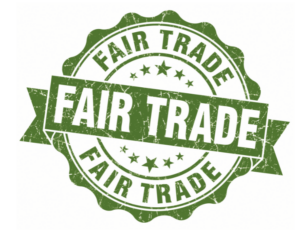 The fair trade movement began in the mid-20th century as a response to the exploitative practices that were rampant in global trade. Small-scale farmers in developing countries often found themselves at the mercy of volatile markets and unfair pricing, struggling to make ends meet. In response, organizations like Fairtrade International and the Rainforest Alliance emerged in efforts to create a more equitable system. These certifications have evolved over the years, encompassing a broad range of criteria that go beyond fair wages to include some pretty stringent environmental standards.
The fair trade movement began in the mid-20th century as a response to the exploitative practices that were rampant in global trade. Small-scale farmers in developing countries often found themselves at the mercy of volatile markets and unfair pricing, struggling to make ends meet. In response, organizations like Fairtrade International and the Rainforest Alliance emerged in efforts to create a more equitable system. These certifications have evolved over the years, encompassing a broad range of criteria that go beyond fair wages to include some pretty stringent environmental standards.
There are several types of fair trade certifications, each with its own specific focus. For instance, Fairtrade International is perhaps the most well-known, emphasizing fair prices and direct trade relationships. The Rainforest Alliance, on the other hand, integrates environmental sustainability more explicitly into its criteria, ensuring that certified products are produced with minimal impact on the natural world. Other
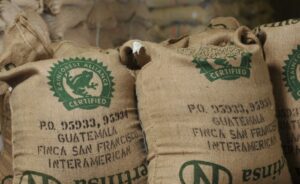
certifications like UTZ Certified and Fair for Life also contribute to this growing ecosystem, each adding unique value to the fair trade landscape.
Understanding these certifications is crucial, as they represent more than just ethical consumerism – they are a direct link between our daily choices and the health of our planet. As we move forward, it’s essential to recognize how these certifications lay the groundwork for sustainable production practices that protect both people and the environment.
Environmental Standards in Fair Trade
One of the most significant aspects of fair trade certifications is their commitment to environmental sustainability. Unlike conventional farming practices, which often prioritize short-term yields over long-term ecological health, fair trade standards are designed to promote practices that protect and sustain the environment. These standards are not just about maintaining current environmental conditions but are actively geared toward improving them for future generations.
Sustainable Farming Practices
At the heart of fair trade environmental standards is the promotion of sustainable farming practices. This includes encouraging organic farming methods, which reduce or eliminate the use of harmful pesticides and synthetic fertilizers that can degrade soil health and pollute water sources. Organic farming not only preserves the natural fertility of the soil but also enhances biodiversity by creating habitats for a variety of plant and animal species. These practices lead to healthier crops and contribute to the overall resilience of farming systems.
Soil and Water Conservation
Soil and water are two of the most critical resources in agriculture, and fair trade certifications emphasize their careful management. Practices such as crop rotation, cover cropping, and agroforestry are encouraged to maintain soil fertility, reduce erosion, and prevent the depletion of nutrients. These methods also help in managing water usage, ensuring that it is used efficiently and sustainably. By protecting these vital resources, fair trade certifications help farmers mitigate the risks of droughts, floods, and other climate-related challenges.
certifications emphasize their careful management. Practices such as crop rotation, cover cropping, and agroforestry are encouraged to maintain soil fertility, reduce erosion, and prevent the depletion of nutrients. These methods also help in managing water usage, ensuring that it is used efficiently and sustainably. By protecting these vital resources, fair trade certifications help farmers mitigate the risks of droughts, floods, and other climate-related challenges.
Biodiversity
Another key component of fair trade environmental standards is the protection of biodiversity. Monoculture farming, which is common in conventional agriculture, often leads to the destruction of natural habitats and a decline in biodiversity. In contrast, fair trade practices encourage the cultivation of diverse crops and the preservation of natural ecosystems. This not only enhances the resilience of farms to pests and diseases but also supports the broader ecological balance, ensuring that local wildlife and plant species thrive alongside agricultural activities.
By adhering to these environmental standards, fair trade-certified farms become stewards of the land, working in harmony with nature rather than against it. The impact of these practices extends beyond individual farms, contributing to the global effort to combat environmental degradation and climate change. As consumers, when we choose fair trade products, we are supporting these sustainable practices and helping to create a more resilient and healthy planet.
The Connection Between Fair Trade and Climate Change
The conversation about climate change is intensifying with each passing year, and fair trade practices play a significant role in addressing this global challenge. While large-scale industrial farming is often associated with high carbon emissions, deforestation, and unsustainable resource use, fair trade-certified farms are working to reverse these trends by embracing practices that are not only environmentally sound but also climate-friendly.
Carbon Footprint Reduction
One of the primary ways fair trade certifications contribute to mitigating climate change is through the reduction of carbon emissions. Fair trade standards often require the use of organic or low-impact farming techniques that reduce the need for synthetic fertilizers and pesticides, which are significant sources of greenhouse gas emissions. Additionally, many fair trade farms employ agroforestry – a method that integrates trees into farming systems. Trees act as carbon sinks, absorbing carbon dioxide from the atmosphere and storing it in their biomass and soil. This not only reduces the overall carbon footprint of the farm but also contributes to global carbon sequestration efforts.
Deforestation Prevention
Deforestation is a major contributor to climate change, accounting for a significant percentage of global carbon emissions. Many conventional agricultural practices, particularly in the production of commodities like coffee, cocoa, and palm oil, involve clearing large areas of forest to make way for monoculture crops. In contrast, fair trade certifications often include strict criteria against deforestation. By protecting existing forests and encouraging reforestation, fair trade farms help preserve critical carbon sinks and protect biodiversity, which are essential for maintaining the balance of our global climate.
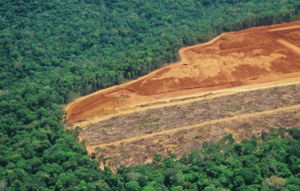
Supporting Climate-Resilient Communities
Climate change disproportionately affects small-scale farmers in developing countries – they are often the first to experience the impacts of extreme weather events, shifting growing seasons, and other climate-related challenges. Fair trade practices help build resilience among these communities by providing fair prices and financial stability, allowing farmers to invest in adaptive measures. These might include diversifying crops, adopting water conservation techniques, or implementing sustainable land management practices. By empowering farmers to adapt to a changing climate, fair trade not only protects livelihoods but also contributes to the long-term sustainability of agricultural practices.
Through these initiatives, fair trade certifications offer a proactive approach to combating climate change. They demonstrate that it is indeed possible to produce goods in a way that not only meets the needs of consumers but also safeguards the planet for future generations. As more consumers become aware of the environmental impact of their choices, the role of fair trade and similar movements in addressing climate change will only continue to grow.
More Ethical Labor Practices
While the environmental benefits of fair trade are substantial, the movement is equally committed to promoting social justice and improving the lives of workers and farmers around the world. Ethical labor practices are a cornerstone of fair trade certifications, ensuring that the people who produce the goods we enjoy are treated with dignity and respect. This commitment to ethical labor is intrinsically linked to environmental health, as the well-being of workers often goes hand in hand with the well-being of the environment they work in.
Worker Rights and Environmental Health
Fair trade standards strive for safer working conditions for farmers and laborers, which directly contributes to better environmental outcomes. For instance, fair trade-certified farms must minimize or eliminate the use of harmful chemicals that can endanger both the workers who apply them and the surrounding ecosystems. Workers on these farms are provided with protective gear, training, and support to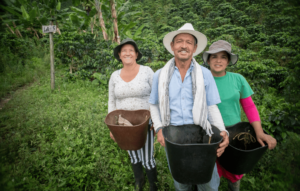 handle agricultural practices safely, reducing their exposure to toxic substances. This focus on safety and health creates a positive feedback loop – healthier workers are more capable of sustaining the long-term health of the land they cultivate.
handle agricultural practices safely, reducing their exposure to toxic substances. This focus on safety and health creates a positive feedback loop – healthier workers are more capable of sustaining the long-term health of the land they cultivate.
Empowerment of Local Communities
Fair trade is not just about striving for fair wages; it’s about empowerment. When receiving fair compensation for their labor, farmers and workers are better equipped to invest in sustainable practices and community development. Many fair trade certifications require a portion of the profits to be reinvested in community projects, such as building schools, healthcare facilities, or infrastructure that supports environmental sustainability. These investments can help build resilient communities that are better able to manage and protect their natural resources, further enhancing the environmental impact of fair trade.
Case Studies
Real-world examples can illustrate the profound impact of fair trade on both people and the environment. For instance, consider the coffee cooperatives in Central America, where fair trade has enabled farmers to switch from conventional to organic farming methods. This transition has not only improved the health of the land but has also led to better living conditions and stronger community bonds. Another example is in West Africa, where fair trade cocoa farms have used their premium to fund environmental education and reforestation projects, directly contributing to the fight against deforestation and climate change.
Through these ethical labor practices, fair trade certifications ensure that the pursuit of environmental sustainability does not come at the cost of human well-being. Instead, they create a holistic approach where the health of people and the planet are viewed as mutually reinforcing goals.
Limitations of Fair Trade
While fair trade certifications certainly offer potential benefits for both the environment and labor conditions, they are not without their limitations. It’s important to recognize that despite the positive intentions behind fair trade, these certifications do not always succeed in significantly improving the quality of life for the most marginalized farmers. A closer examination of the experiences of small-scale coffee farmers in Nicaragua highlights some of the complexities and challenges inherent in the fair trade system.
The Reality of Low-Intensity Farming
One of the primary findings from research conducted in Nicaragua between 2005 and 2008 is that Fair Trade organic production can increase farmer income, particularly when compared to low-intensity conventional farming. However, this increase is often modest at best, especially for farmers practicing low-intensity organic farming. These farmers typically produce very small quantities of coffee, which means that even with the premium prices offered by fair trade markets, their overall income remains low. As a result, many of these farmers unfortunately continue to live in poverty, despite their participation in fair trade networks.
Economic Challenges in High-Intensity Farming
For farmers who engage in more intensive farming practices, the benefits of Fair Trade certification are not as clear-cut. While higher levels of management might yield better-quality coffee, the lower yields associated with organic farming methods can offset the financial advantages of selling at fair trade prices. Moreover, the price premiums that are a cornerstone of the fair trade model are often influenced by fluctuations in the mainstream market. When global coffee prices are high, the relative advantage of selling under fair trade terms diminishes, as the difference in income becomes less significant.
Systemic Issues and Market Dependence
Another challenge faced by farmers in fair trade systems is the heavy dependence on external markets. While fair trade aims to provide more stable and fair prices, it doesn’t always address deeper structural issues such as access to land, credit, or local market opportunities. Many farmers still find themselves vulnerable to market volatility and external economic pressures that can undermine the stability that fair trade is supposed to provide. Additionally, the costs of obtaining and maintaining certification can be burdensome, particularly for smaller farmers who may struggle to meet the stringent standards required.
This example of Nicaraguan coffee farmers is a telling example of how fair trade, despite its best efforts, does not always deliver the promised improvements in living standards. The modest gains in income are often insufficient to lift the most disadvantaged farmers out of poverty. These findings suggest that while fair trade can be a valuable tool, it is not a one-size-fits-all solution. There needs to be a greater focus on supporting the most marginalized farmers with tailored approaches that address both economic and environmental sustainability.
despite its best efforts, does not always deliver the promised improvements in living standards. The modest gains in income are often insufficient to lift the most disadvantaged farmers out of poverty. These findings suggest that while fair trade can be a valuable tool, it is not a one-size-fits-all solution. There needs to be a greater focus on supporting the most marginalized farmers with tailored approaches that address both economic and environmental sustainability.
Recognizing these limitations is crucial for consumers and advocates alike. It highlights the need for continued evaluation and improvement of fair trade practices to ensure that they are truly benefiting those they are meant to help. While fair trade is a step in the right direction, it needs to be part of a broader strategy that includes support for local economies, education, and infrastructure development to create lasting, meaningful change for small-scale farmers.
Final Thoughts
Fair trade certifications represent a powerful movement toward a more equitable and sustainable global economy, offering a beacon of hope in the fight against environmental degradation and labor exploitation. By promoting sustainable farming practices, reducing carbon footprints, and empowering local communities, fair trade initiatives play a crucial role in protecting both people and the planet. They provide consumers with the opportunity to make ethical choices that contribute to a healthier environment and a fairer world.
However, as we have discussed above, the impact of fair trade is not without its complexities and limitations. While fair trade can improve the livelihoods of farmers, particularly those engaged in low-intensity farming, the benefits are sometimes modest and insufficient to lift the most marginalized farmers out of poverty. The economic advantages of fair trade are also tied to market conditions, which can make the financial gains less predictable and stable. Moreover, systemic challenges such as access to resources and market dependence can further complicate the effectiveness of fair trade certifications in delivering meaningful improvements to farmers’ lives.
As consumers, it’s important to understand both the strengths and limitations of fair trade. Supporting fair trade products is a step toward a more sustainable and just world, but it is not a panacea. To truly address the challenges faced by small-scale farmers, fair trade must be part of a broader strategy that includes targeted support for local economies, access to education and resources, and continued evaluation of certification standards.
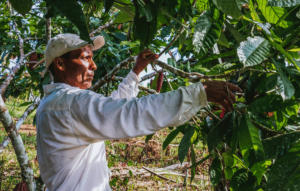
Ultimately, fair trade offers a valuable framework for promoting environmental health and social justice, but it must be continually refined and adapted to meet the needs of the most vulnerable populations. By remaining informed and engaged, we can help ensure that fair trade achieves its full potential in creating a more sustainable and equitable future for all.








